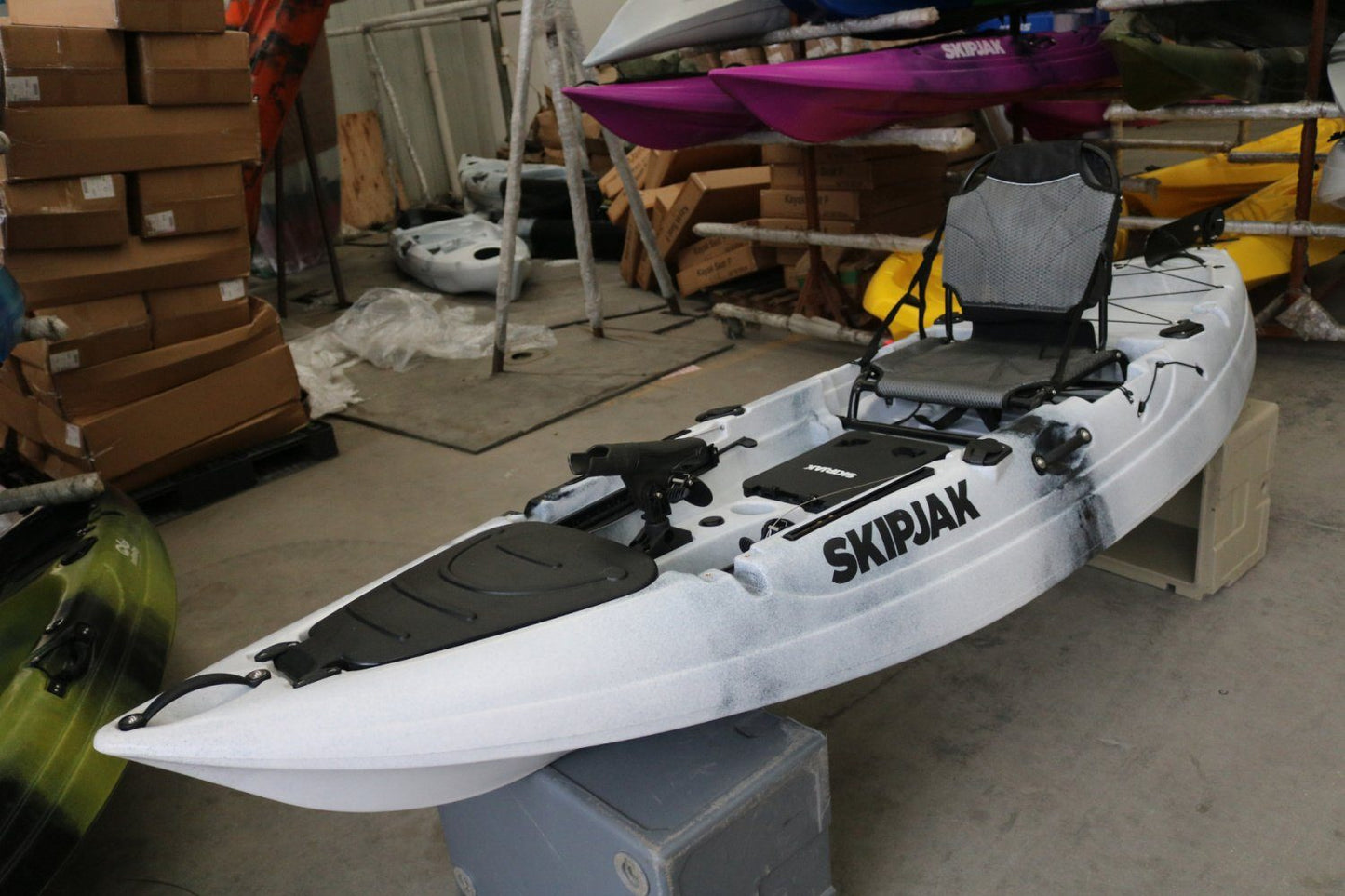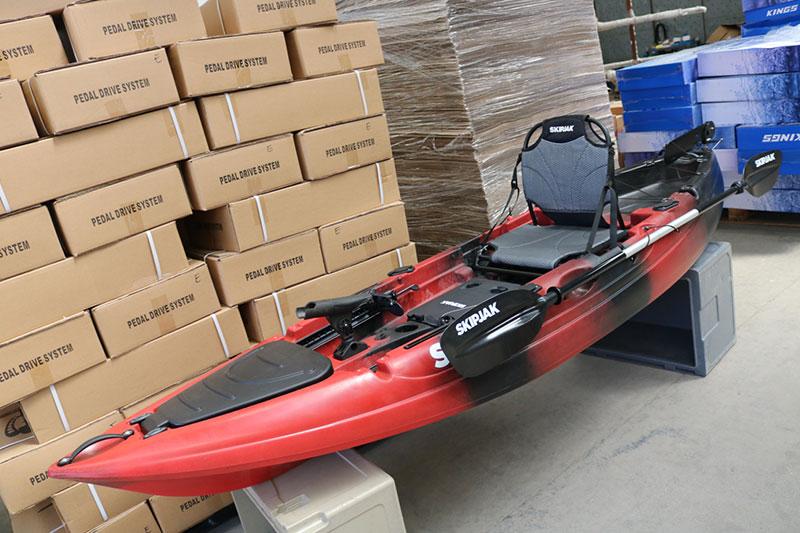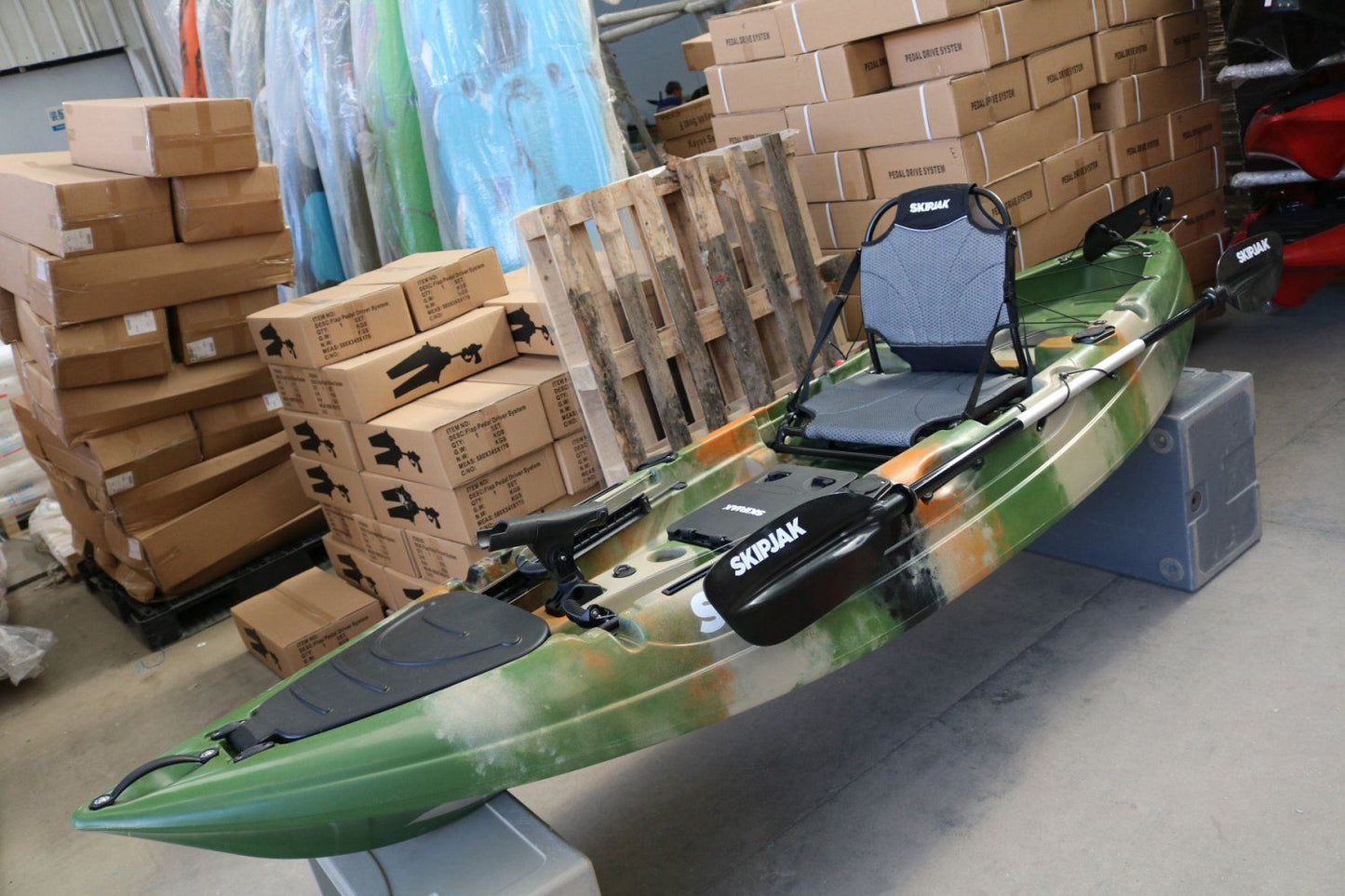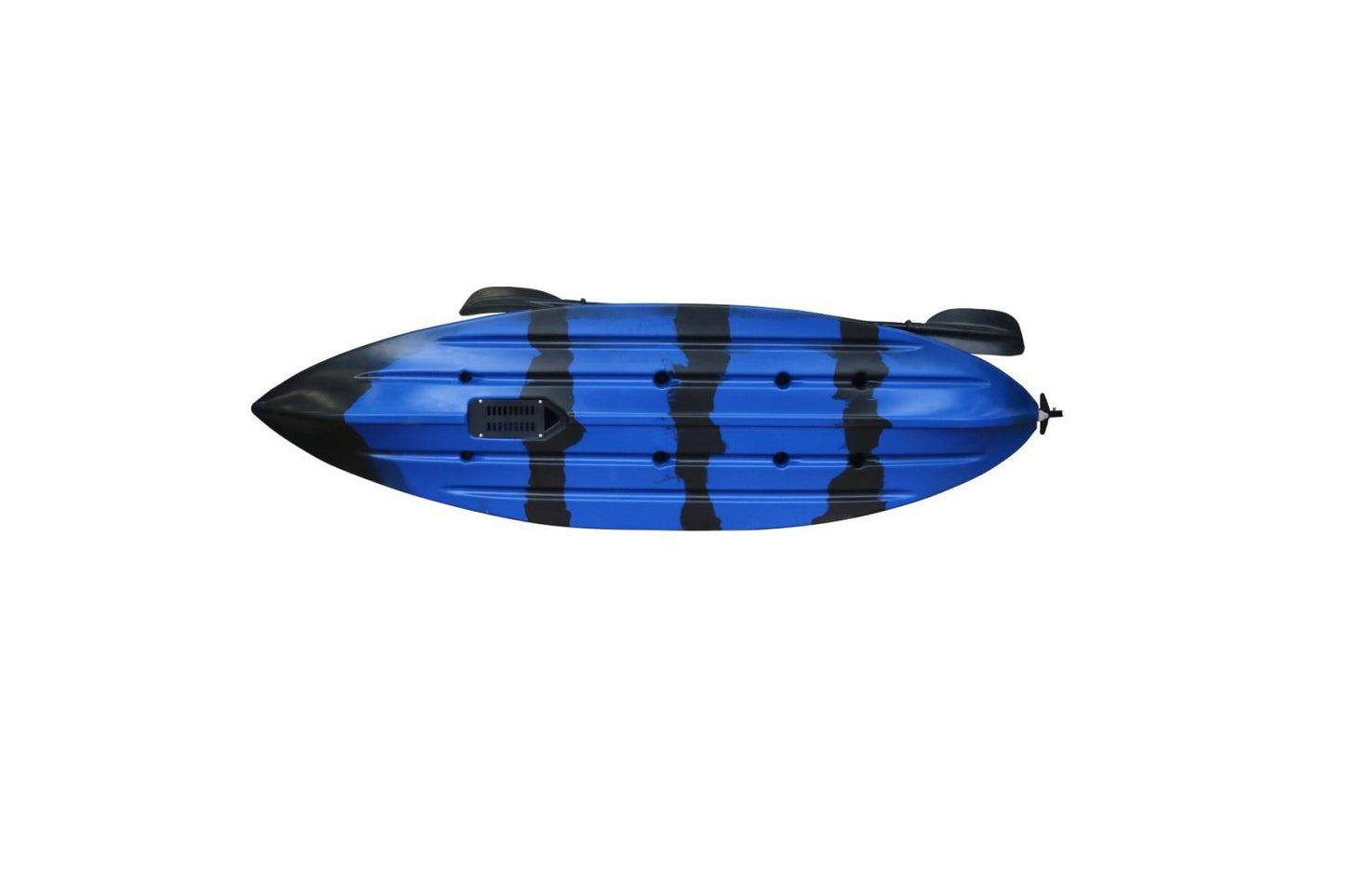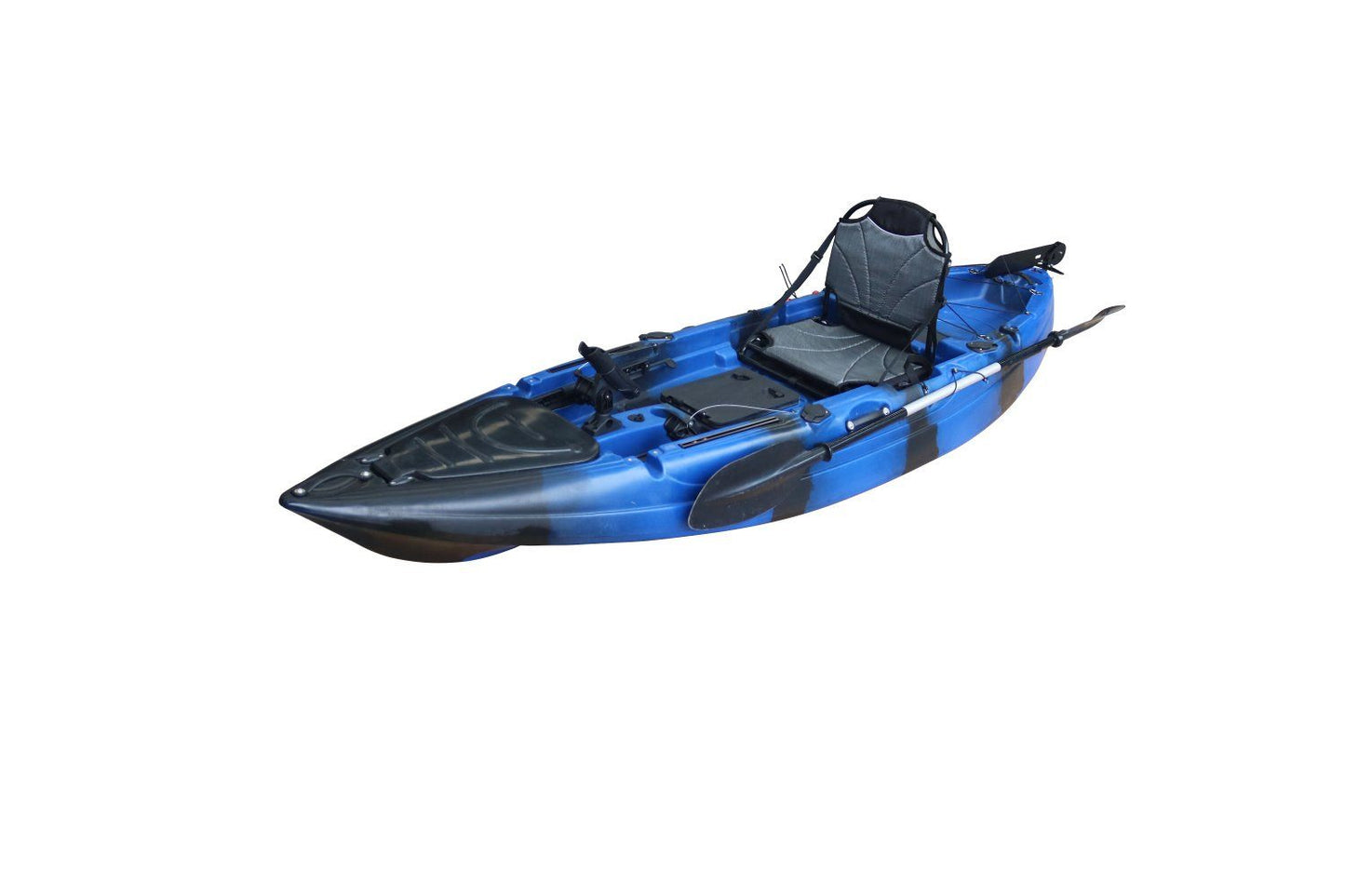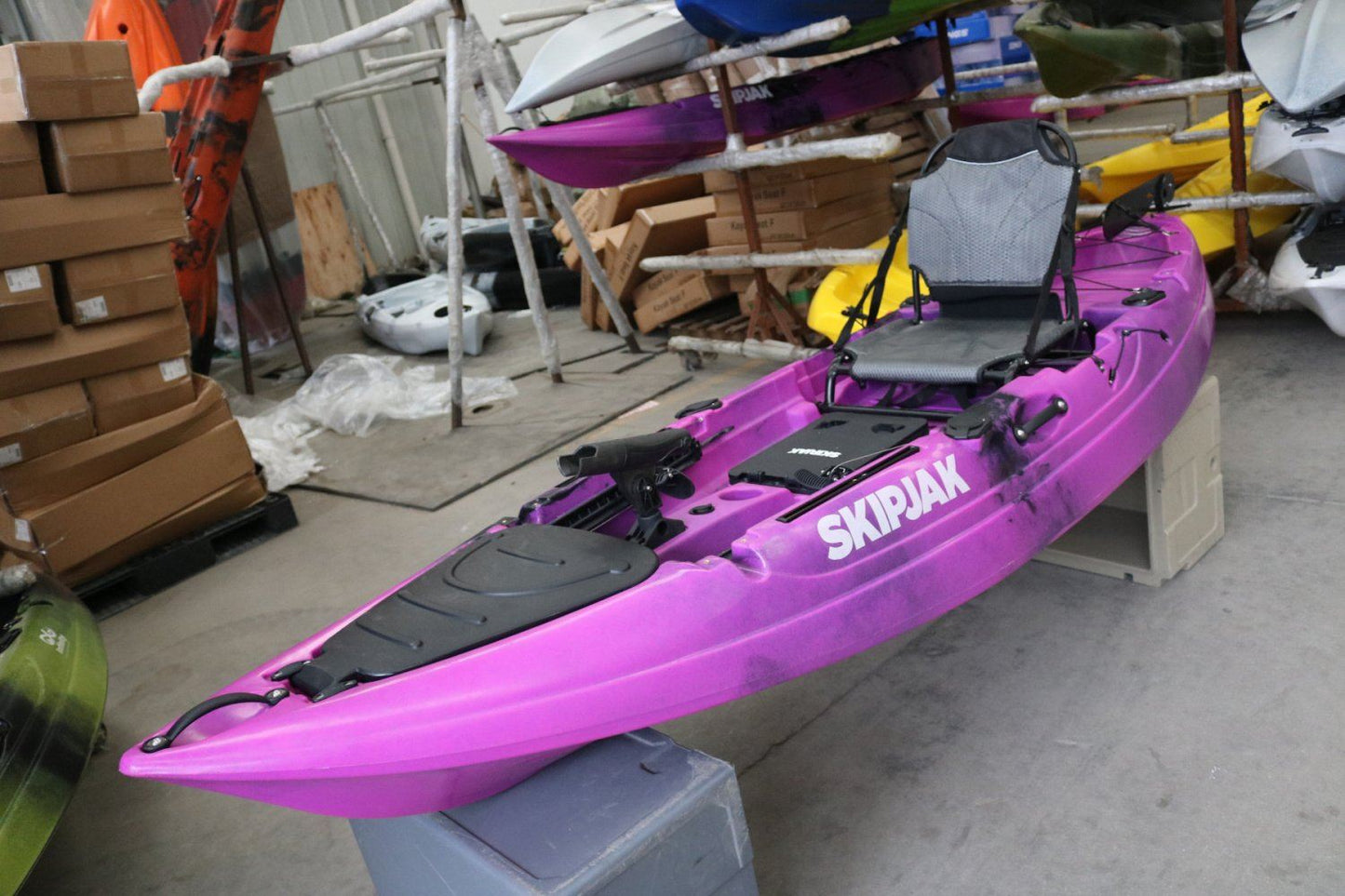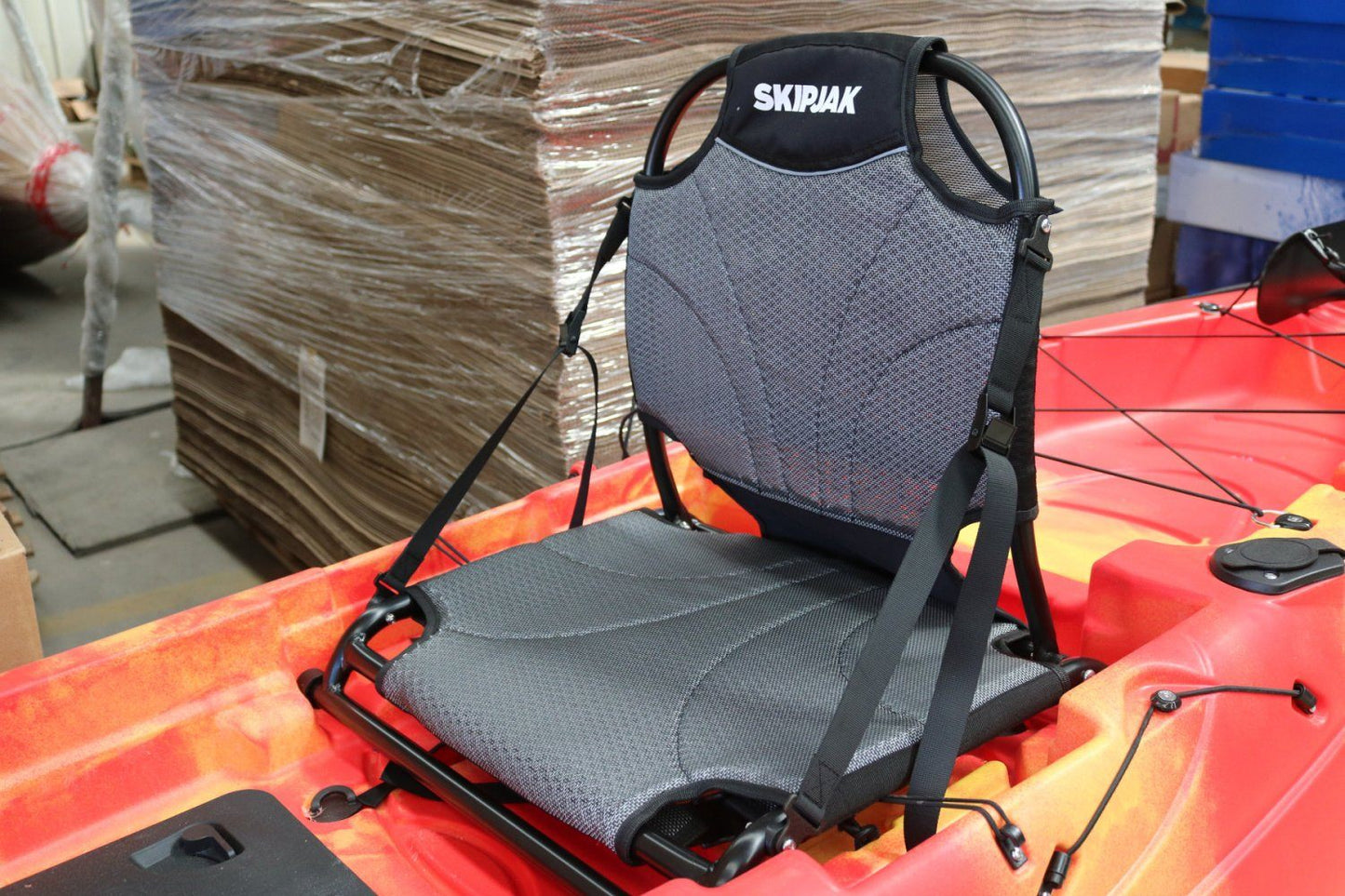Kayaking isn’t just a sport for fair weather. Many people put away their paddles when the fine summer sun disappears and the temperatures drop. However, these people may be missing out on some of the most beautiful and peaceful conditions to kayak in.
Kayaking in the winter can be breathtaking. Sure, it can be a little chilly, but as long as you’re prepared and willing to embrace the weather, you can expect peaceful crisp mornings without another paddler in sight.
There are several reasons to keep your kayaking kit out now it’s a little colder. Frost-covered banks, calm waters, and stunning sunrises are just a few reasons you shouldn’t hang up your life jacket just yet. Providing you have some good cold-weather clothing, winter kayaking can be extremely enjoyable.
In this article, we’ll be looking at why many of us here at Lakeland Kayaks enjoy paddling in winter over some of the other seasons. We’ll also be helping you prepare for your winter kayaking ventures with some useful advice on clothing, kit, and ways to make your cold-weather adventures more comfortable and enjoyable.
Why You Should Paddle Through the Winter and into Next Year…
Summer can be a fantastic time to head out kayaking and so can late spring and early autumn. However, the winter can bring peace and tranquillity, calm waters, and frost-covered landscapes — all without the pesky insects that frustrate us through the warmer months.
There’s much to love about the months of winter. Nature at this time of the year is often sleepy but quite exposed. Winter is a fantastic time to head out into nature spotting wildlife and watching nature from your boat. The bare leafless banksides and crisp clear mornings provide the perfect conditions for spotting deer, otter, and a variety of birdlife from your kayak.
The sunrises and sunsets during winter can be spectacular too. Getting out in your kayak just before sunrise on a clear frosty morning is something you’ll never forget. The way the icy banksides glisten under the early morning sunlight is something spectacular.
The other fantastic thing about winter is the peace and quiet. Things always seem more calm and quiet during the winter months but perhaps the best thing for the avid kayaker is the fact that there are far fewer other water users around. If you like having the waterway to yourself, winter is the time to be kayaking!
Finally, if you enjoy a bit of pike, perch, or zander fishing, the winter is the best time to do it. Predator fishing from a kayak during the winter can be a huge edge. The cold icy waters of winter often produce the biggest pike, so if you’re looking for a new personal best, definitely head out on your kayak spinning this winter.
How to Prepare Yourself for Winter Kayaking
Okay, so now we know that winter is a fantastic time to go kayaking, there are a couple of things you should know. Sure, kayaking in the winter can be incredible. However, if you're not prepared for the cold temperatures and potentially harsh weather you'll have a terrible time.
In this section, we'll be giving you four tips to ensure you have the best possible time while kayaking in the colder months. Consider this advice carefully because these tips will make or break your cold-weather kayaking adventures.
1. Get The Right Clothes for the Conditions
One of the most important things to consider if you want to go kayaking during the winter is your clothing. The explorer Ranulph Fiennes famously said, "there's no such thing as bad weather, only inappropriate clothing".
Fiennes is exactly right. If you want to be comfortable and enjoy yourself during your outdoor adventures in the winter, you must have the right clothing.
Clothing for kayaking can be a little confusing. Of course, you want to select something that’s going to keep you warm and dry but you must be conscious of the material also.
It’s definitely not recommended to wear anything that’s super absorbent while kayaking. This includes things like wool, cotton, and down. Unfortunately, the most insulative winter kit is often not suited for use on the water. Anything that soaks up water will put you in danger if you end up capsizing in the open water.
Instead, you should look for lightweight kit that’s waterproof, windproof, and insulative. Thick puffer jackets and parkas are out of the question but there are plenty of warm hiking and outdoor jackets that are suitable for kayaking.
I would recommend taking a mountaineering approach to your winter kayaking clothing outfit. This involves several layers rather than one thick insulative garment.
Starting with a thin thermal base layer is best. Something that’s tight-fitting, breathable, and synthetic will help contain your body heat while providing wicking so you don’t retain moisture through sweating.
After the base layer, you can go with a decent set of outdoor trousers and a lightweight waterproof jacket. This will do just fine for the early winter and as long as you keep moving, you’ll stay warm, dry, and comfortable without restricting your movement.
If you’re venturing out in the colder conditions later on in the winter season, you can layer up in between the base layer and shell layer (outer layer i.e: jacket and trousers).
I find that a relatively tight-fitting pair of track pants (jogging bottoms) over my base layer with a pair of Fjällräven G-1000 waterproof hiking pants over the top is plenty to keep me warm. This works well for me over in Scandinavia where the early winter conditions can reach -10 degrees Celcius just before the ice takes hold of the waterways.
For the top layer, a lightweight fleece works perfectly over the top of the base layer. Try to find something insulative yet breathable and find something as synthetic as possible — this won’t soak up the water as much as natural materials if the worst happens and you capsize.
If you’re still cold after layering up in this way, add another layer over your fleece layers (jogging bottoms and fleece top). A good wind and waterproof shell will make all the difference though — preventing the cold winter air from reaching your body.
Of course, a good hat and a thick pair of socks alongside some decent boots will also help you keep your body temperature stable.
2. Prepare Some Warm Drinks
A thermos flask is a godsend for winter kayaking. It's incredible how much a simple flask of hot coffee or tea can warm you up on those crisp winter mornings.
I'd definitely recommend investing in a decent flask or two for winter. It's always nice sipping a hot drink while admiring the view before continuing on your journey.
Thermos flasks can also be used to keep cooked hotdogs warm in boiled water or store a hearty soup for lunch.
3. Hand Warmers Are a Lifesaver
Hand warmers are simple one-time use or reusable (depending on the type) bags that heat up when activated. They can be placed in your pockets, gloves, or boots to keep you warm. They really do help take the edge off in cold conditions and can allow you to paddle that little bit longer in comfort.
There’s nothing worse than paddling with icy-cold hands and fingers that you can barely move. Hand warmers can definitely combat this and make life out in your kayak during winter far more bearable.
4. Bring a Camping Stove With You
If you’re planning on heading out for longer day trips kayaking in the winter or are keen enough to embark on multi-day tours in your humble vessel, a camping stove is essential. Okay, you can live without one but having something that produces heat that allows you to make warm drinks and food on the go will keep your spirits up.
Ingesting warm food and drinks throughout a trip during the winter is a fantastic morale booster and it can make you feel much warmer on those colder days. After a warm meal, you feel fueled up and ready to take on the challenges that the winter environment can bring forth.
Stopping to make a hot coffee or bowl of soup is also a great way to re-energize and break up the day when you’re paddling in harsh conditions.
A simple minimalist hiking stove that sits on top of a small gas bottle is perfect for the kayaker. They take up next to no room storage-wise and they weigh next to nothing. These efficient little stoves are fantastic for daily cooking and can even be used to take the crisp edge off the cold air inside your tent as long as you’re safe and responsible while doing so.








